Storytelling is something dear to me, be it books, stories published online or manga. Especially manga is a medium I’ve loved for years. Fantastic manga tell not only a story, but often combine it with great visuals.
What makes them so intriguing is the combination of cultural differences, unique stories and visuals.

Over the years, I’ve read hundreds of manga, but their quality can vary. That’s the reason I put together a list of twenty-five fantastic manga. Some titles might be more popular than others, but I believe there are also some hidden gems on this list.
If you’re looking for more manga recommendations, I urge you to check out my articles on the best horror manga, the best seinen manga, and the best shonen manga.
While I try not to go into too much detail regarding the plot, I still like to give a spoiler warning. Sometimes it’s unavoidable.
So, here are twenty-five fantastic manga anyone should read.
Dragon Head
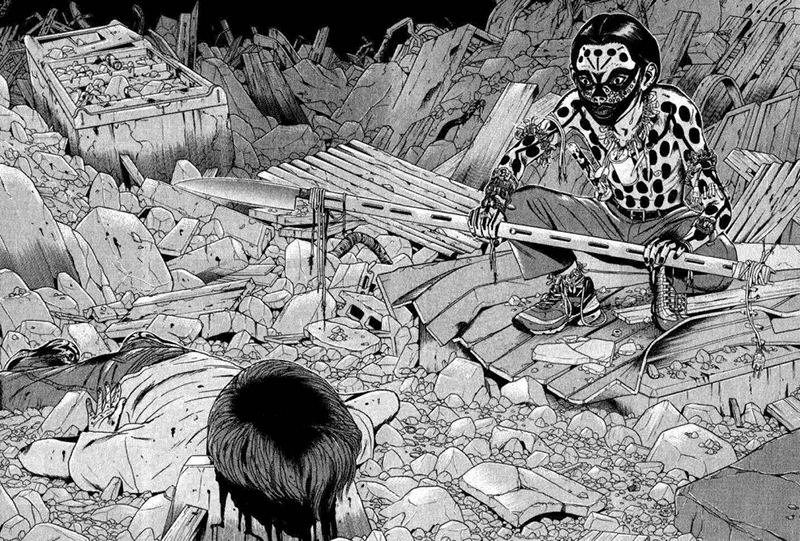
Minetaro Mochizuki’s Dragon Head is a fantastic manga depicting the apocalypse.
After a violent train wreck, our protagonist Teru has to watch many of his classmates die in front of his eyes. With two other survivors, Ako and Nobu, he tries to leave the tunnels. The lack of light and food, however, soon impacts their fragile psyche.
Eventually, they make it out, but have to discover that the world’s changed and become much more dangerous than the tunnels.
The greatest part about Dragon Head is the atmosphere. There’s a constant sense of suspense, but also a feeling of all-encompassing hopelessness to the world.
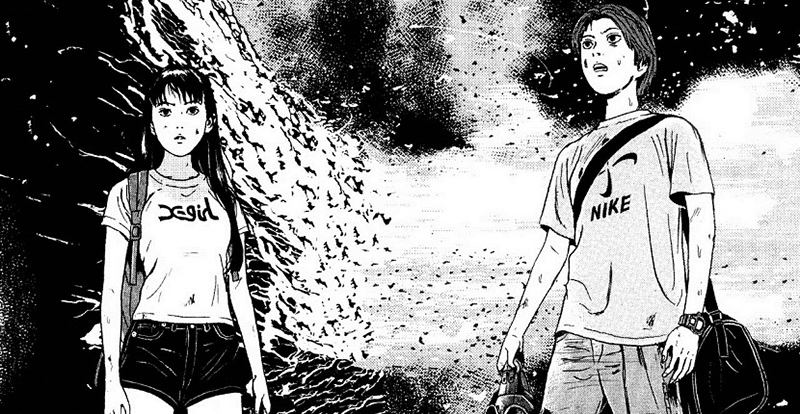
Dragon Head’s characters are realistic, show genuine emotions and act the way you’d expect people to act during a disaster. They are afraid, panic, and even go crazy.
The art in Dragon Head is fantastic and makes it stand out amongst other similar manga. We witness a destroyed, hapless world in all its terrifying glory. We see firestorms, half-collapsed tunnels and even entire derelict cities.
Dragon Head’s biggest problems, however, are the pacing and the ending. In later parts, the manga’s pacing drags on because it focuses more on character introspection. As for the ending, Dragon Head simply ends. We don’t get any answer, no resolution, it’s just over.
And yet, Dragon Head is a fantastic manga, and brings forth one of the most realistic and intimate depictions of the world’s end in the entire medium. A must read for fans of survival and disaster manga.
Claymore
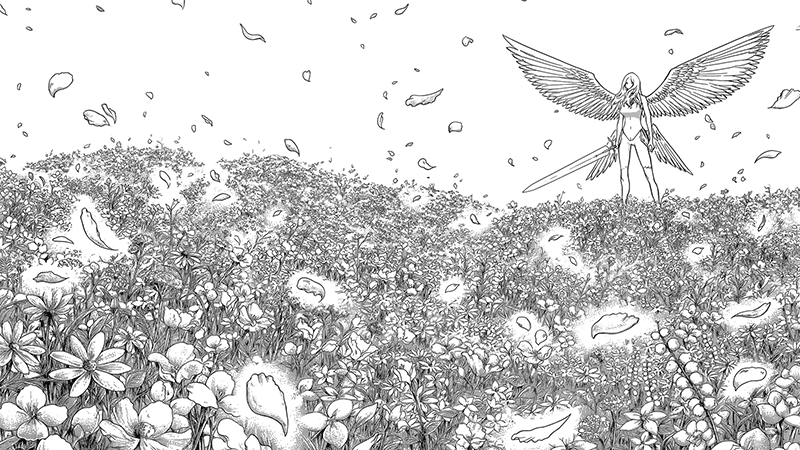
Claymore’s a dark fantasy manga by Norihiro Yagi.
It’s a fantastic manga set in a medieval fantasy world populated by Yoma, monstrous beings with an insatiable hunger for human flesh.
Claymores are female warriors tasked with killing these Yoma. Clare, our protagonist, is one such Claymore.
At first the magna follows an episodic structure, as Clare dispatches various Yoma. Eventually, a main plot is introduced and we learn more about Clare, her caretaker Teresa, and the ominous being known as Priscilla.
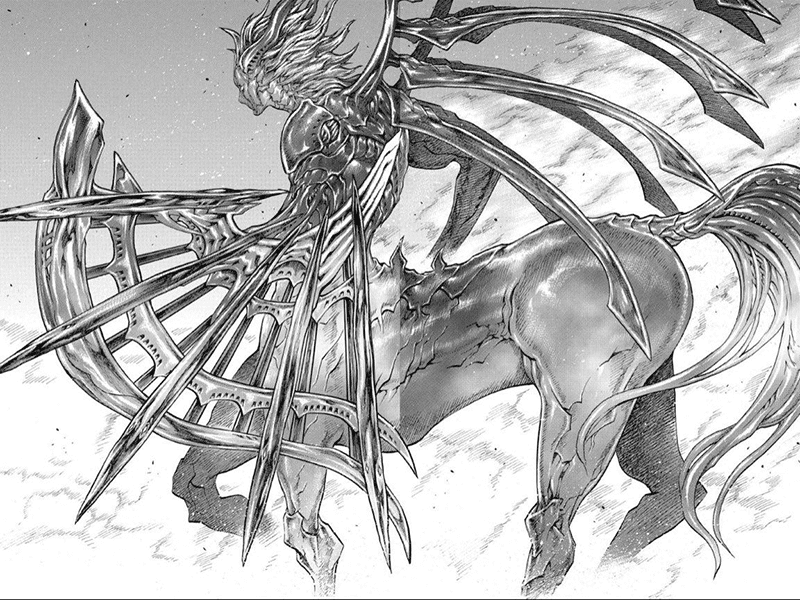
While Claymore’s main story is intriguing, the manga’s biggest selling point is the art. The world’s beautiful, comprising beautiful landscape and detailed cities. Where it clearly stands out, though, is in terms of creature design. It features some of the most stunning monsters in the entire medium.
Yet, there are some problems with Claymore. It features many battles, but sometimes, they are hard to follow and a bit uninspired. Claymore’s world is beautiful, but it seems hardly used.
Another is the principal antagonist. While we learn about her early on, she remains an ominous presence for most of the manga, and only comes into play near the end.
The biggest problem with Claymore, however, is the ending. It contains a rather questionable revelation that felt more like a cop-out than anything else.
Even though Claymore’s a fantastic manga, one of the best in the fantasy genre and features some of the best art in the entire medium.
Attack on Titan
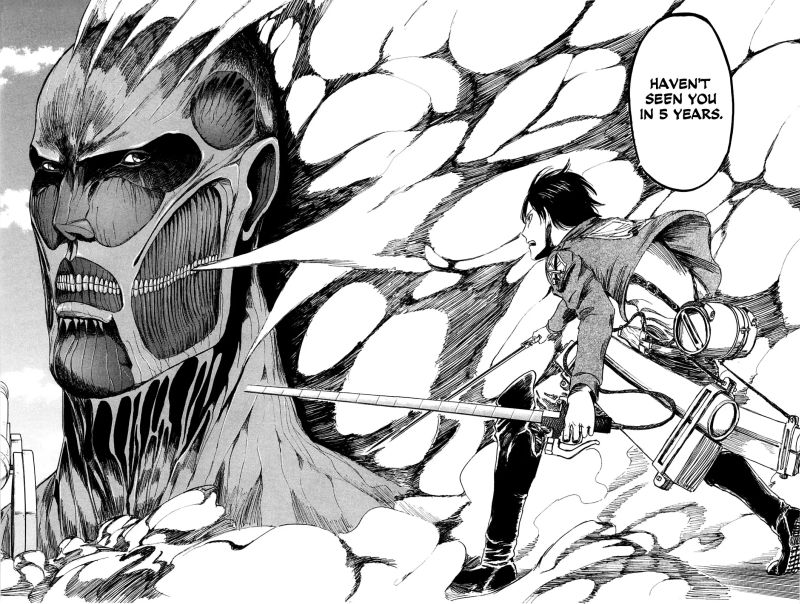
Attack on Titan is one of the most popular manga on this list.
It’s another dark fantasy manga. All of humanity’s confined to a single city which is under the constant thread of being eradicated by the titans.
Eren Yeager is a young military recruit who gets the power to turn himself into a titan. He soon joins the survey corps and the fight to destroy the titans for good.
While the story’s premise is rather simple, it gets more interesting the longer the manga continues.
Attack on Titan’s art starts out as barely average, but Hajime Isayama improves vastly and from volume six onwards, it’s one of the better drawn manga series out there. Especially wider shots are often gorgeous to look at.
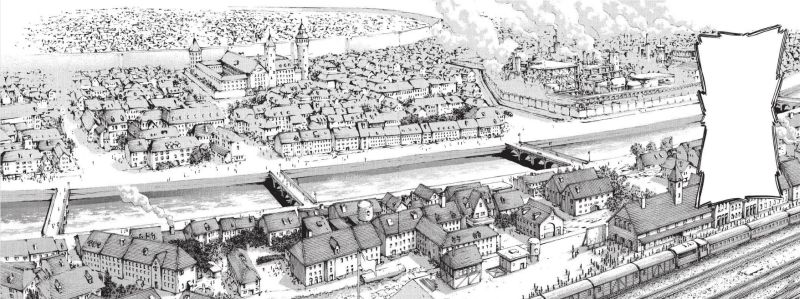
The art truly shines during the manga’s many battles. They are brutal, disturbing, but always fast-paced because of the unique weapons employed by the survey corps.
One element that’s especially disturbing is the design of the titans. Instead of being twisted monsters, they appear as dim-witted, almost simplistic human beings.
My biggest problem with Attack on Titan was certain directions taken in the latter half of the manga. Hajime Isayama made certain choices which expanded the manga’s world vastly, but also took away much of the mystery. From this point onward, the manga, unfortunately, went downhill.
Still, if you’re looking for a fantastic manga with a complex story and unique fight scenes, Attack on Titan’s what you’re looking for.
Annarasumanara
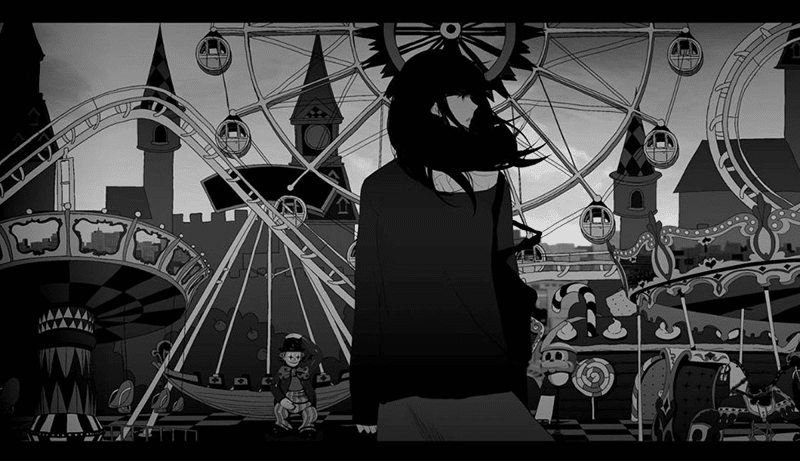
Han Il-Kwon’s Annarasumanara is one of the most beautiful and heartfelt stories I’ve ever come upon. While it’s a manhwa, I still want to shed light on it on this list of fantastic manga.
In this story, we’re introduced to a magician who lives in an abandoned theme park. Whenever people visit him, he shows them his magic, but only after asking if they believe magic to be real.
Our protagonist, Yoon Ah-ee, is a poor high school student whose life comprises studying, working and taking care of her younger sister. She’s long given up believing in magic.
When she herself stumbles into the abandoned amusement park, she sets out to meet the mysterious magician. This meeting should change her life forever.
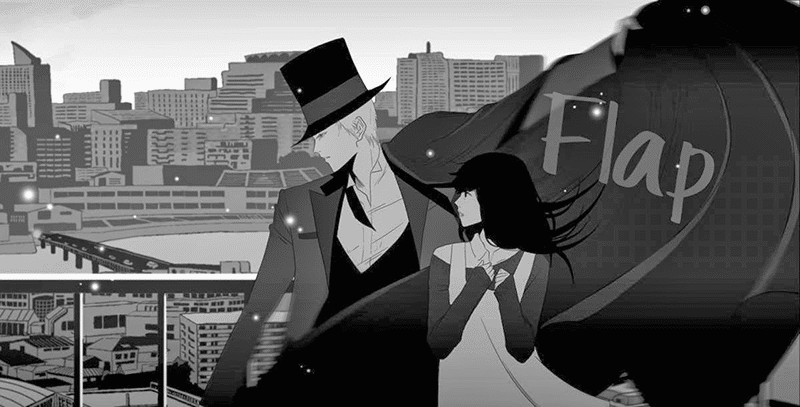
Annarasumanara touches on a variety of complex themes. The most important being that of living up to your own expectations and those of others, but also the question of what life and happiness truly are about.
While magic is a central theme, we find out it’s not so much about magic tricks, but about the magic of life; the beauty we see as children and which we wish to get back as adults.
One thing that’s interesting about Annarasumanara is the art. It’s strange, almost abstract, but also unique. This uniqueness, however, also has meaning to the plot.
While some characters might be a bit out there at first, the more we learn, the more we realize they are actual people with genuine emotions.
Annarasumanara’s a fantastic manga, one I recommend to anyone, and if you read it, you might learn that maybe real magic actually exists.
Chi no Wadachi
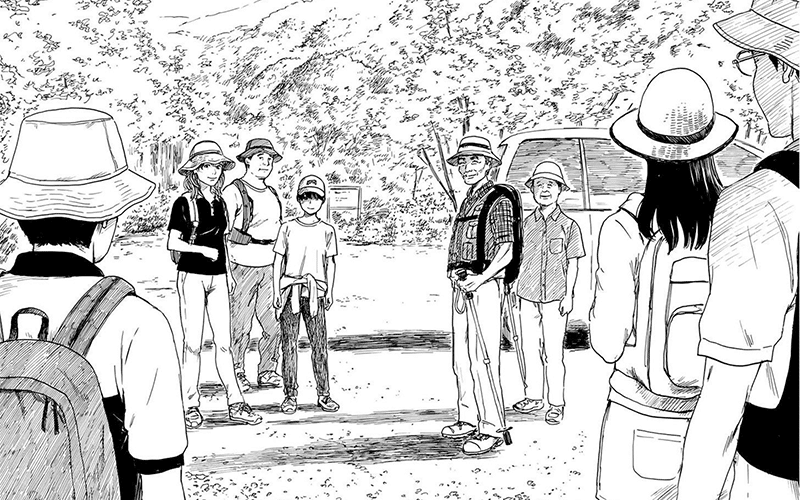
Chi no Wadachi’s a fantastic manga. It centers on various psychological themes, such as drama, abuse, and manipulation.
Seichi Osaba is a typical young boy; he’s got friends, a crush and loving parents. His mother, however, is extremely overprotective, but it doesn’t seem too big a concern.
All that changes during a hike with his extended family. After a certain incident, his life changes forever, and from here on out things only spiral out of control more.
Chi no Wadachi’s a slow manga. Chapters seldom include more than a few events, sometimes nothing more than a single interaction between two characters. This stifling progress, however, adds so much more to the tension and suspense.
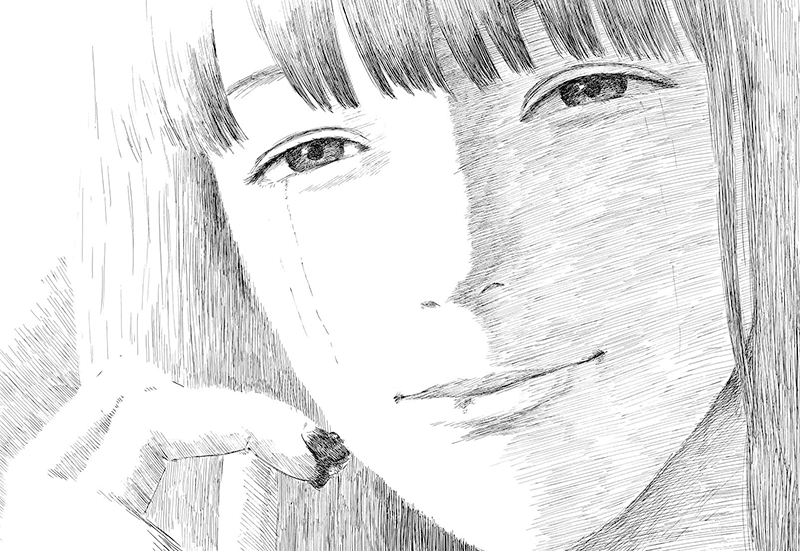
The manga’s full of slow shots, and focuses on even the smallest detail. While this style of storytelling can be oppressive at first, it also makes Chi no Wadachi such a fantastic manga.
Chi no Wadachi’s art is absolutely stunning. While it can be dense at times, and detailed at others, it always conveys the story’s mood. One detail it focuses on heavily is facial expressions, especially smiles.
The manga’s story isn’t too complex, but it’s told extremely intimately. Seichi’s insecurity and his dependency on his mother can unsettle, while her toxic manipulations are nothing short of disturbing.
Chi no Wadachi’s a fantastic manga, a deep psychological drama that’s presented to us in a way that’s both intimate and unique.
Ouroboros
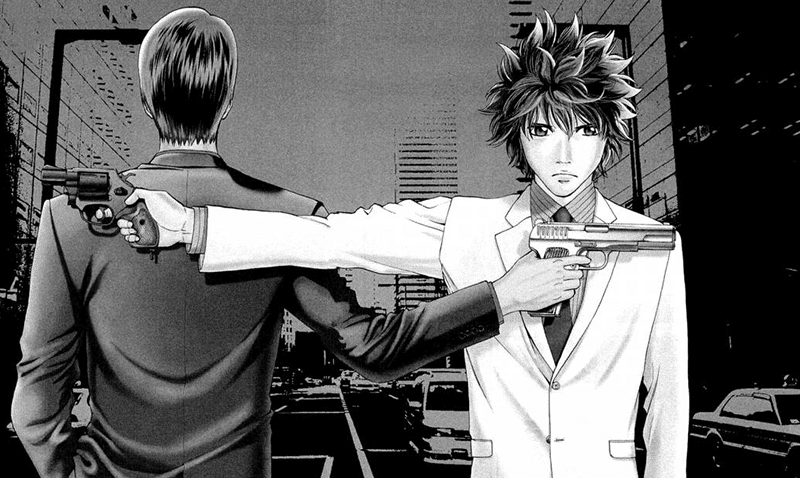
Yuuya Kanzaki’s Ouroboros is a crime manga that tells the story of two men, Ryuuzaki Ikuo and Tatsuya Danno. When they were children, they both lived in an orphanage under their caretaker, Yuiko. This happy life ended when she was murdered in front of them.
Now, years later, Ryuuzaki works as an investigator for the Shinjuku Police while Tatsuya’s a member of the yakuza.
At first, Ouroboros is told in a more episodic fashion and we witness how the two of them solve various crime cases together.
Eventually, though, we learn what the two of them are truly after. They are searching for the man who murdered Yuiko, and to find him, they each chose their individual path.
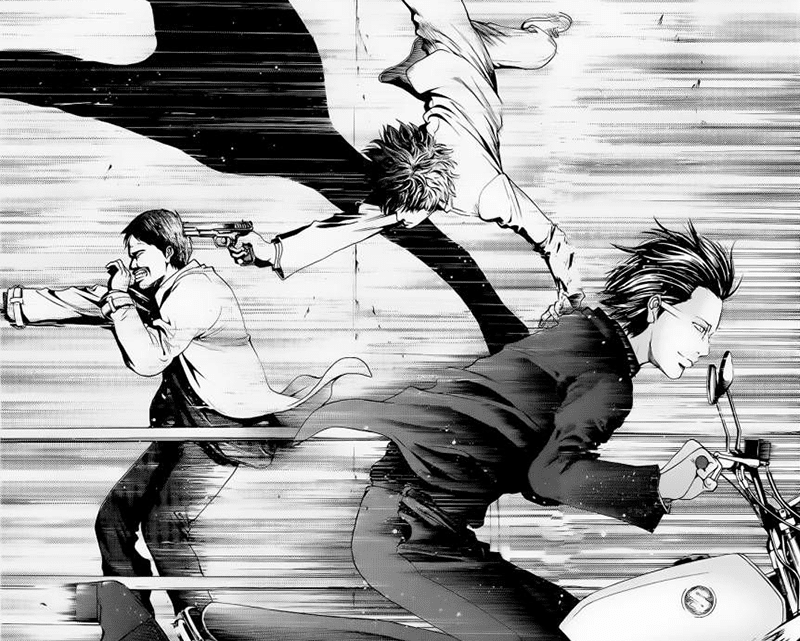
This overall plot is Ouroboros’ strongest point. It’s a mystery full of twists and turns that will throw you off constantly and keep you guessing.
Another thing I enjoyed were our two protagonists. They are both interesting and complex. Yet, there are also quite a few fantastic side-characters, for example Mizuki Hibino and Shinichi Chono.
The only problem with Ouroboros is the way the story unfolds. Near the end, the twists became a little too much, and some revelations were quite clichéd.
Overall, though, Ouroboros is an extremely engaging series. While the initial episodic nature can be daunting, the story’s great. If you’re interested in police, crime and conspiracies, read this fantastic manga.
Sanctuary
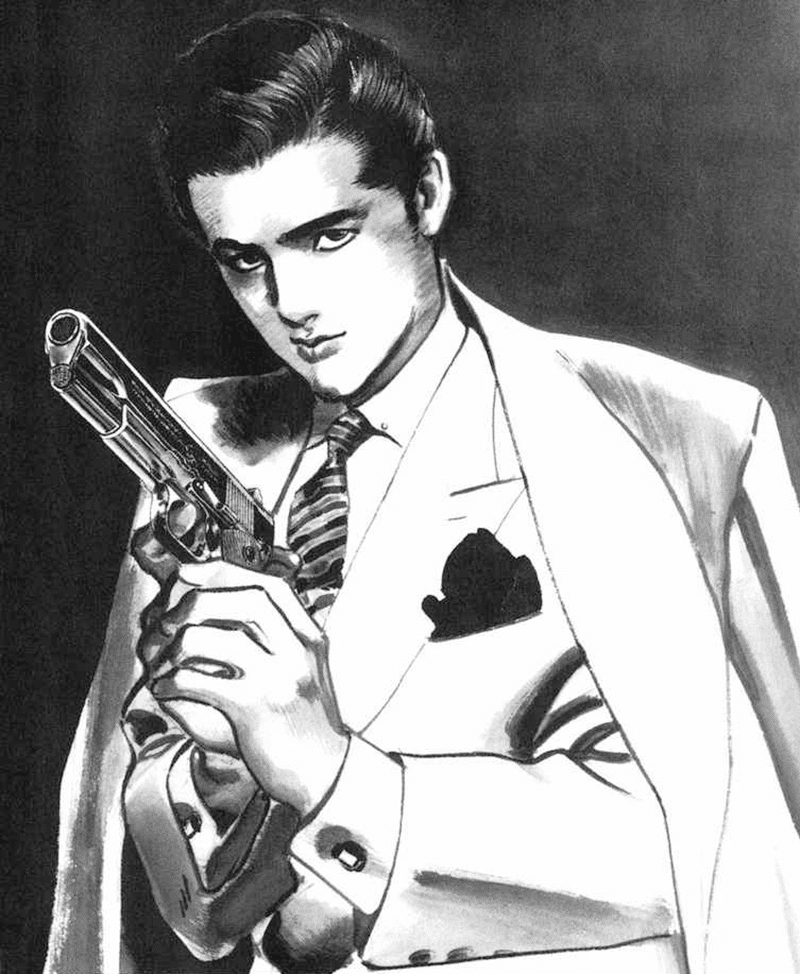
Sanctuary by Buronson and Ryoichi Ikegami’s a fantastic manga about yakuza, and, oddly enough, politics.
It tells the story of two men, Akira Houjou and Chiaki Asami. In their opinion, Japan’s stagnant, corrupt and ruled by old men who’ve accepted the status quo. Thus, the two of them set out to change the course of the nation.
To this end, they decide to conquer Japan via a two different routes. While Asami aims to become prime minister, Houjou sets his sight on the underworld to seize control of the yakuza.
What I enjoyed the most about Sanctuary were the two alternative plots, one focusing on organized crime, the other on politics.

Over the course of the manga, both characters are opposed by a variety of adversaries, be they yakuza bosses, ambitious hot-heads or seasoned diet members. Isaoka, the general of the Liberal Democratic Party, stands out the most. He’s one of the most formidable adversaries in manga.
The biggest problem with Sanctuary is realism. The manga tries very hard to portray the story’s developments as realistic. Especially the countless political shenanigans, intrigues, plans and twists, however, were a bit too unrealistic. This was especially noticeable near the end.
Another problem is the manga’s depiction of women. Apart from one or two exceptions, they were prostitutes or sex objects.
Even though Sanctuary’s a fantastic manga. It might be over-the-top, it might not make all sense, but it’s always suspenseful, full of action and badass characters.
Tokyo Ghoul
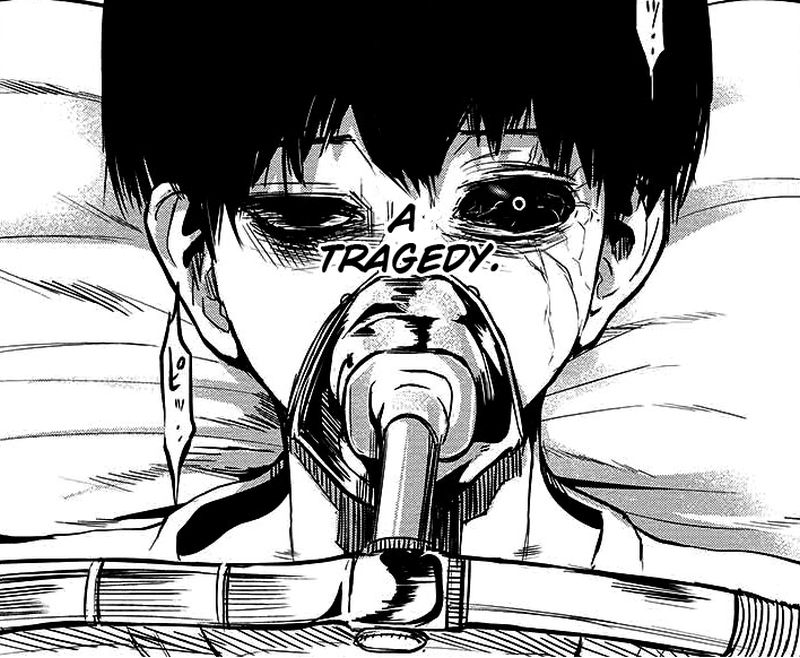
Tokyo Ghoul by Sui Ishida tells the story of college student Ken Kaneki. After he meets the beautiful Rize, his life changes forever. She’s a ghoul and because of her hunger for human flesh, she soon attacks Kaneki. Ghouls are creatures who look just like humans, feed on them to survive and have superhuman powers.
Kaneki’s life is saved by Dr. Kanou, but he learns he’s now part ghoul. He seeks refuge at a café called Anteiku, a safe house for ghouls.
As the story progresses, we learn more about ghouls, the members of Anteiku, but also other groups of interest, such as the CCG and Aogiri Tree.
Tokyo Ghoul’s biggest selling point is the art. The manga’s stunning to look at and comes with great monster design, fantastic backgrounds and an overall gloomy and dark atmosphere.

Another great part is the battles. They are brutal, gory, and fast-paced. Especially the design of the kagune, special weapons or techniques employed by the ghouls, were fantastic. Later parts of the manga, especially Tokyo Ghoul:re, often feature large-scale battles. Those battles, however, are often confusing, and become repetitive in the long run.
The biggest problem with Tokyo Ghoul is the over-usage of certain tropes, the most prevalent that of the tragic past. Almost every character’s backstory’s extremely tragic. This grew old quickly, the emotional impact was lessened, and it felt like more of the same.
Another problem’s the story, especially the ending. Earlier parts of the manga were very engaging, especially those showcasing the dualism between ghouls and the CCG. Later parts, however, dissolved into rather clichéd power struggles. The worst offender’s the ending which felt rushed.
Still, Tokyo Ghoul is a fantastic manga, one of the best in terms of horror, battles and creature design.
One Punch Man
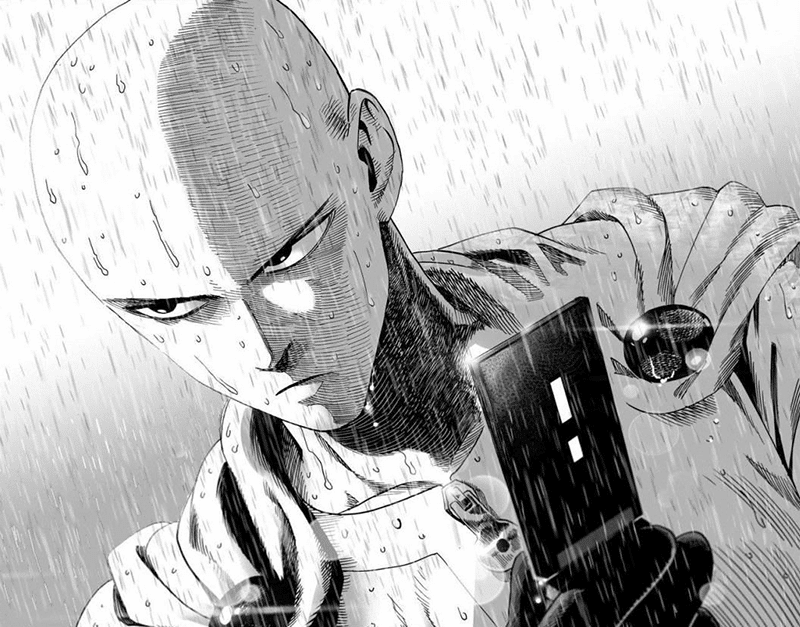
Comedy manga can be hit or miss. Yusuke Murata and One’s One Punch Man, however, stands apart from the rest and is a fantastic manga.
It centers on a single gag, a character so strong he defeats every enemy with a single punch. This character’s Saitama, who becomes a hero to put his strength to good use. Before long, however, he becomes bored and wants nothing more than a real challenge.
With a premise so simple, one would think that the manga would lose its charm quickly, but it never does.
One reason is the expansion of the story and the focus on various other characters and their individual struggles.
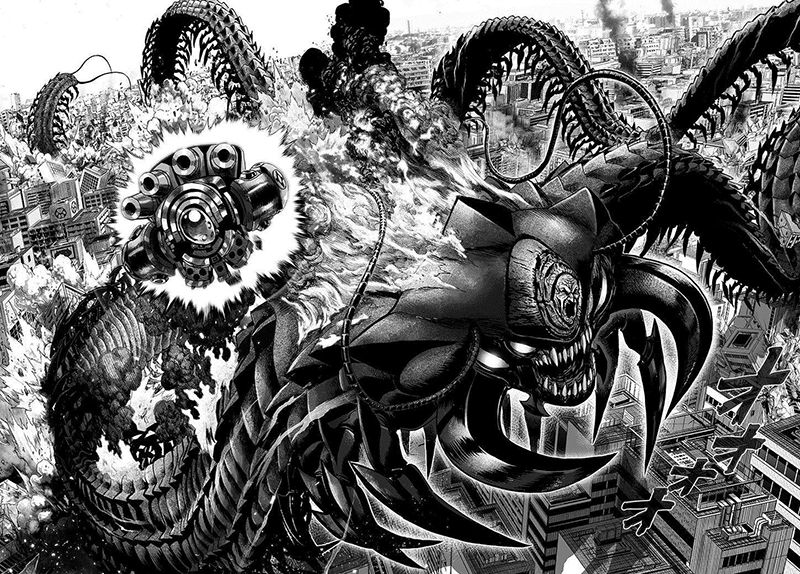
My favorite being King, the world’s strongest man. His scenes are always absolutely hilarious. Other great characters include Fubuki, Genos and especially Garou.
Another reason is the art. One Punch Man is absolutely gorgeous to look at and battles are rendered in stunning detail. While Saitama always ends battles in a single punch, later arcs focus more on the efforts of other characters. Their battles are nothing short of amazing, and come with some of the best art in the entire medium. Especially the most recent, Monster Association arc, focuses heavily on the efforts of other characters. It’s only near the end that Saitama actually takes action in one of the manga’s best fights to date.
Overall, One Punch Man is a fantastic manga, one of the best in the comedy and action genre. While the story might not be the deepest, it’s incredibly entertaining and comes with some of the best art the medium offers.
20th Century Boys
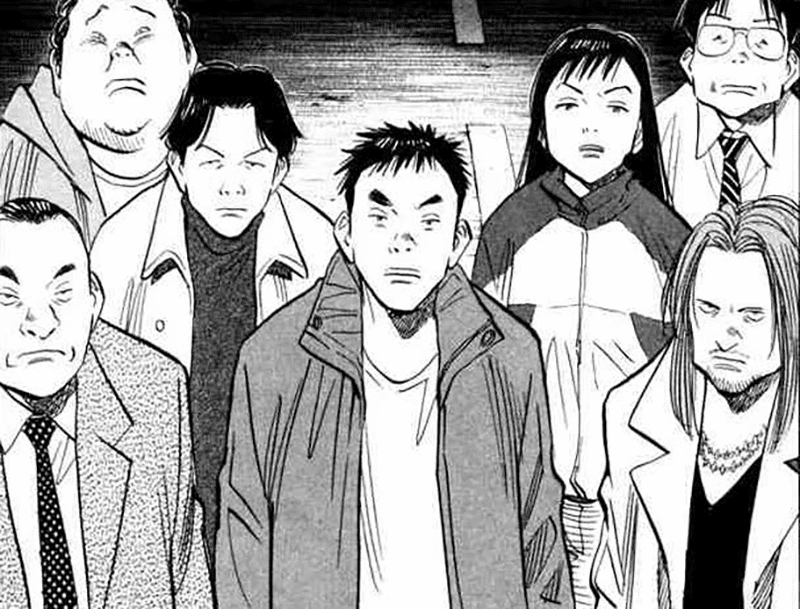
Naoki Urasawa’s 20th Century Boys is a fantastic manga and one of the greatest mystery manga of all time.
The story begins shortly before the end of the 20th century and tells the story of Kenji Endo and his friends. Things are put into motion when Kenji learns that one of his childhood friends committed suicide.
At the same time, a new cult led by an ominous figure known as Friend becomes increasingly popular. Eventually Kenji realizes that this cult, as well as Friend, is related to his childhood. He sets out to reunite with his childhood friends, figure out the truth and stop what he thinks is the coming end of the world.
What makes 20th Century Boys such a fantastic manga’s the mystery, the characters, but most of all the story’s told. Naoki Urasawa’s a master storyteller.

The manga’s plot is divided into three distinct arcs. The first’s set during the end of the 20th century, the second in 2014, the last in the year 3FE, the third year of the friend era. Interestingly, the manga also features flashbacks to the late 60s and early 70s when Kenji and his friends were growing up. Naoki Urasawa masterfully uses those to shed light on certain developments and how they are all related to Kenji’s past.
20th Century Boys features one of manga’s greatest, most well told mystery. It’s a story full of twists and turns that will keep readers guessing who Friend really is.
The biggest problem is that the manga peaks around the middle part and its last arc is easily its worst. This, however, doesn’t mean it’s bad.
If you’re looking for a great mystery manga with a complex and engaging plot, read 20th Century Boys.
Hunter x Hunter
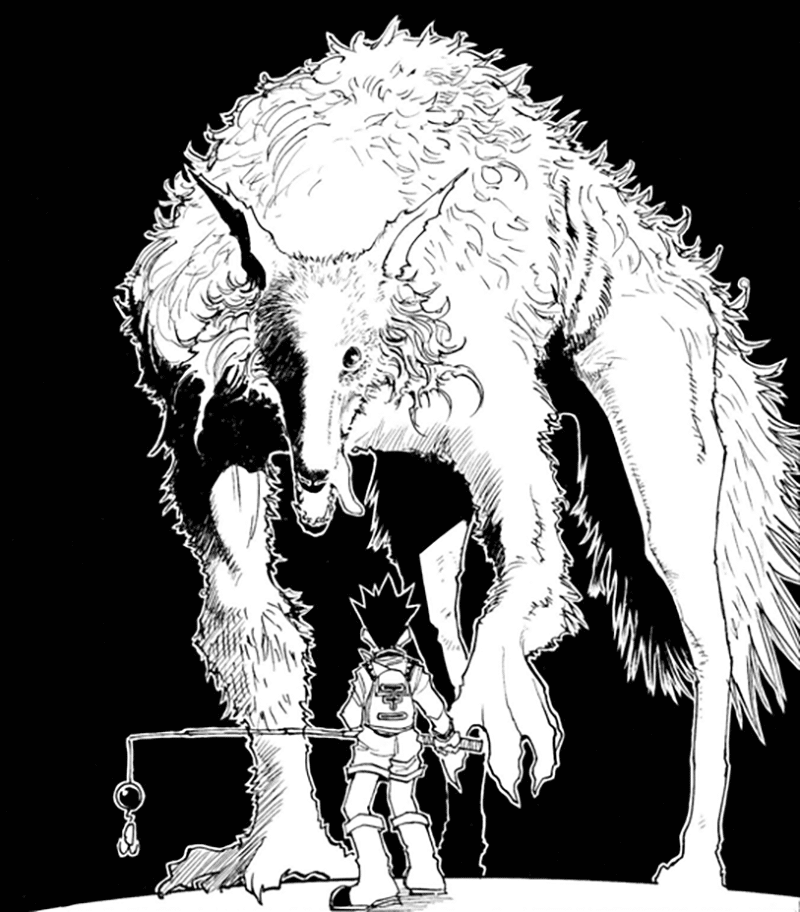
Hunter x Hunter is a fantastic manga and one of the longest, most popular shonen manga out there.
It’s a manga about hunters, licensed treasure hunters with a lot of privileges. Our protagonist, Gon Freecss, a young boy, sets out to be a hunter so he can find his father.
The story starts when he signs up for the Hunter Exam, a series of increasingly hard challenges. During this exam, we’re introduced too much of Hunter x Hunter’s main cast.
While the Hunter Exam arc felt almost too typical for a shonen manga, things got much more interesting in later arcs, especially the York New arc and the Chimera Ant arc.
One of the best parts about Hunter x Hunter is the Nen system. It allows characters to manifest superpowers, but comes with a variety of rules and restrictions.
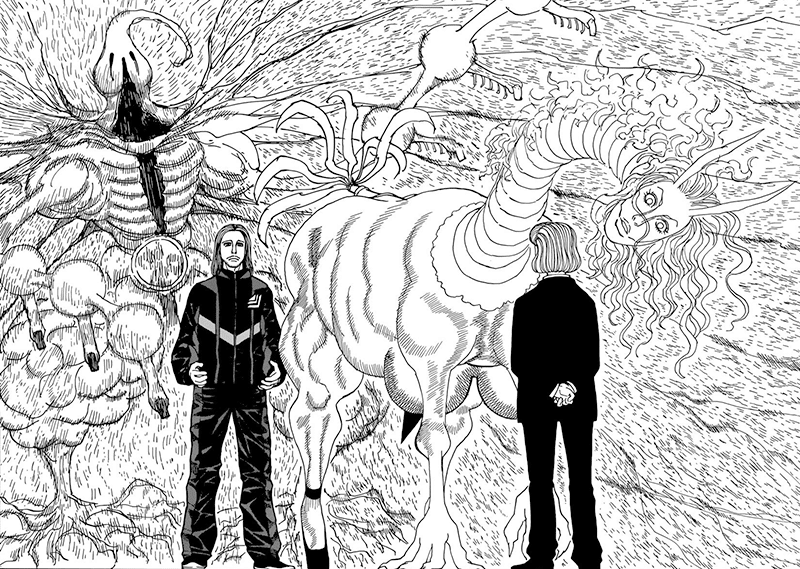
Another great thing is the characters. The protagonists are likeable throughout the board, especially Gon and Killua. The antagonists, on the other hand, are nothing short of fascinating. Hisoka is one of the most outlandish characters in all of manga, and the phantom troop and especially their leader Chrollo are absolute badasses.
Yet, Hunter x Hunter has its problems. The first is the art. At times, Yoshihiro Togashi’s art is absolutely stunning. At others, it’s almost reminiscent of scribbles.
The biggest problem, however, is exposition. Both dialogue and explanations can get a bit out of hand and often seem rather unfocused. This is especially prevalent in the newest arc, the Succession Contest. While it’s easily the most complex arc so far, the sheer amount of exposition can feel overwhelming.
Still, Hunter x Hunter is one of the most enjoyable shonen manga out there and comes with many brilliant moments that easily outshine its shortcomings.
Blue Lock
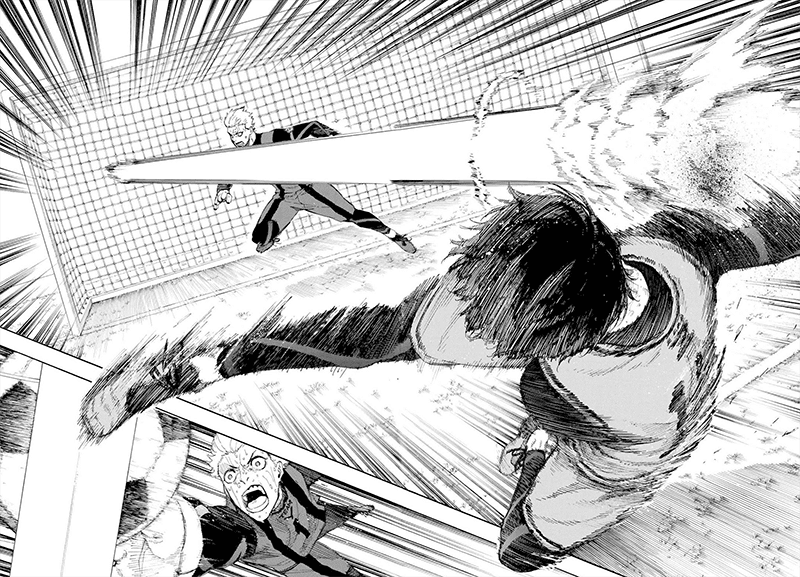
Blue Lock is one of the best shonen manga of recent years, and probably the best sports manga I’ve ever read.
The manga’s story is relatively simple. The Japanese Nation Team lacks one thing, a great striker. Jinpachi Ego then puts together a program that’s held at Blue Lock, a prison like training facility.
Three hundred talented strikers from all over Japan are gathered and pitted against each other. Blue Lock’s sole survivor will then become the new striker of the Japanese National Team.
Yoichi Isagi, our protagonist, is one such striker. Interestingly enough, he’s not your typical overpowered shonen protagonist. Instead, he’s often worse than other characters and has to work hard to catch up. Blue Lock is essentially his quest for self-discovery as he grows as a character and discovers his inherent talents.
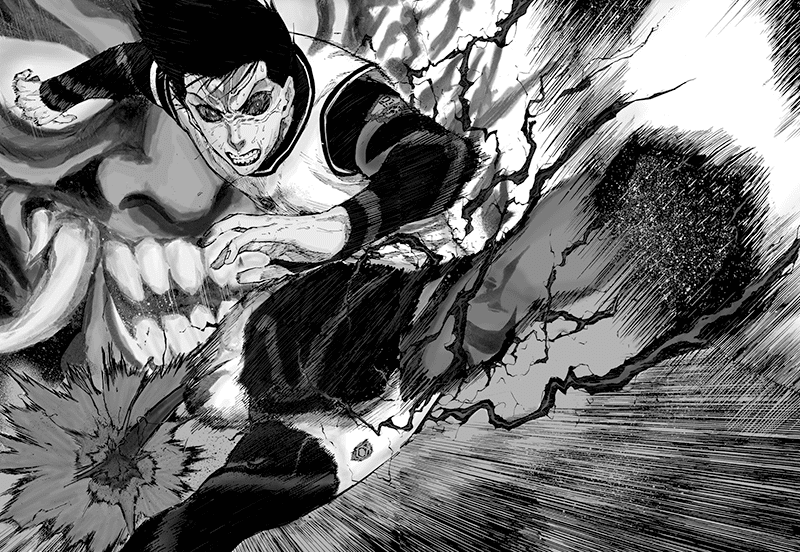
Blue Lock stands out for various reasons.
There’s Yuusuke Nomura’s sharp, vivid and highly engaging art style. It’s especially noticeable during key events in games. They are often presented by exceptionally well-drawn page spreads. He also does a fantastic job showcasing raw emotions and power. We often see characters with glowing eyes, auras or faces distorted by sheer physical strain.
Another thing is the characters. Almost all of them are extremely likeable, complex and unique. My favorite amongst them is Meguru Bachira. He’s an extremely quirky, but also amazing character.
The greatest thing, however, is the sheer amount of tension during games. They are never one-sided, and many times, characters grow or discover new techniques during games that change their course entirely. It makes them nothing short of gripping.
Blue Lock is one of the most fantastic manga of recent years, be it sports or not. For the art and tension alone, I highly recommend it.
C.a.t. (Confidential Assassination Troop)
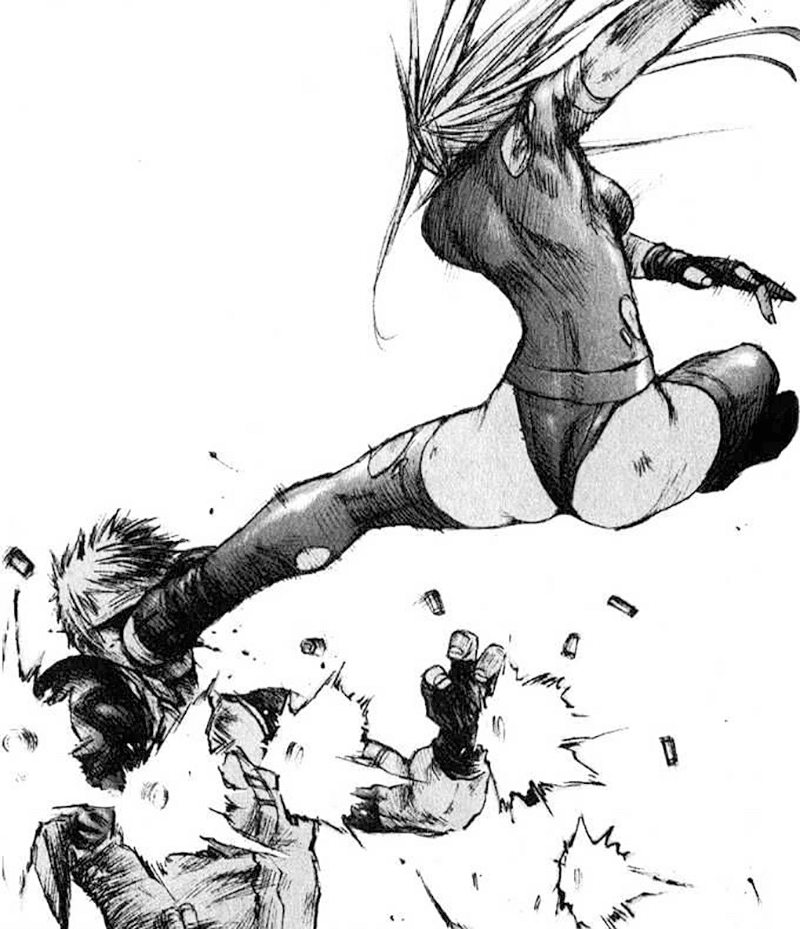
Fung Ching Pang’s C.a.t. is a short action manhua, but I can’t help but include it on this list of fantastic manga.
It centers on a female assassin only known as C.a.t. When she was a child, she was taken by a group called the SFP Project, severely abused, but eventually escaped. Having been trained as an assassin, she’s now out to take revenge on her abusers.
Unfortunately, the manhua was never finished, so the story wasn’t fully fleshed out.
The reason it stands out so much is the breathtaking art. It’s very reminiscent of the gritty, sketchier style of Hiroaki Samura.
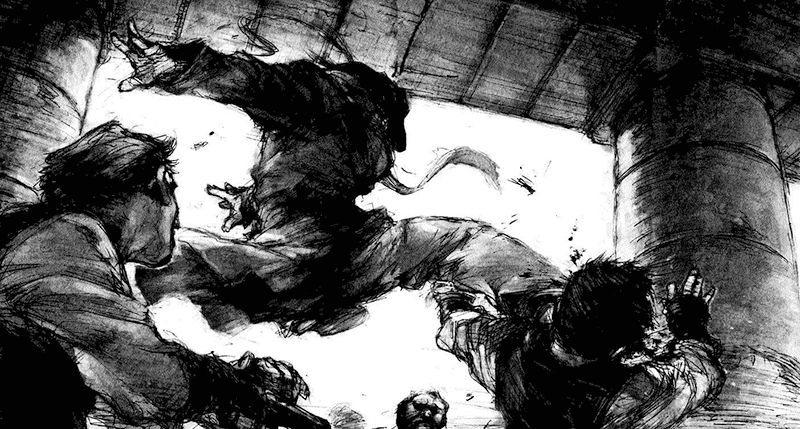
The style lends itself perfectly to C.a.t.’s many action scenes. They are fluid and dynamic and look nothing short of stunning. The same is true for the characters. The same is true for the characters. Every character’s full of details, well designed and unique.
While C.a.t. encounters quite a few adversaries, and they are all impressive on their own, they aren’t much more than typical fodder.
The only characters who stood out apart from C.a.t. were Alvas and Hao Long. Alvas was especially interesting. He’s a man who became the head of the CIA, but seems to play his very own game.
While C.a.t. is unfinished and thus its story is rather underdeveloped, it still stands out because of its fantastic art and fight scenes. I highly recommend it to anyone who’s looking for a fantastic manga with great fights.
Hotel
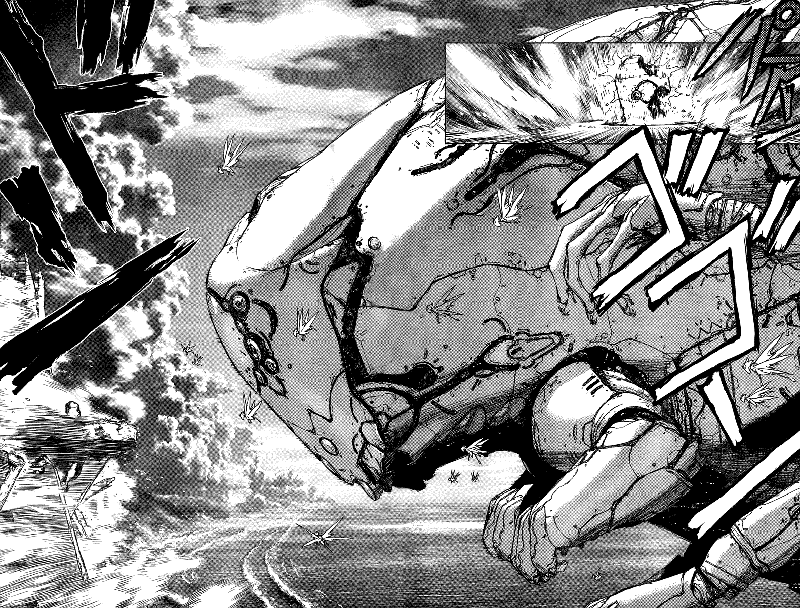
Hotel’s the only collection of one-shots on the list. It’s still a fantastic manga, especially because of Boichi’s stunning art.
Each chapter’s beautiful to look at and full of intricate details. Their content, however, can vary a little. While I liked all the stories featured in Hotel, some were better than others.
The first two chapters both tell a rather straight-forward story and seem to be set in the same world. In chapters three and four, however, things get much stranger. They are both much more surreal and weirder than those that came before.
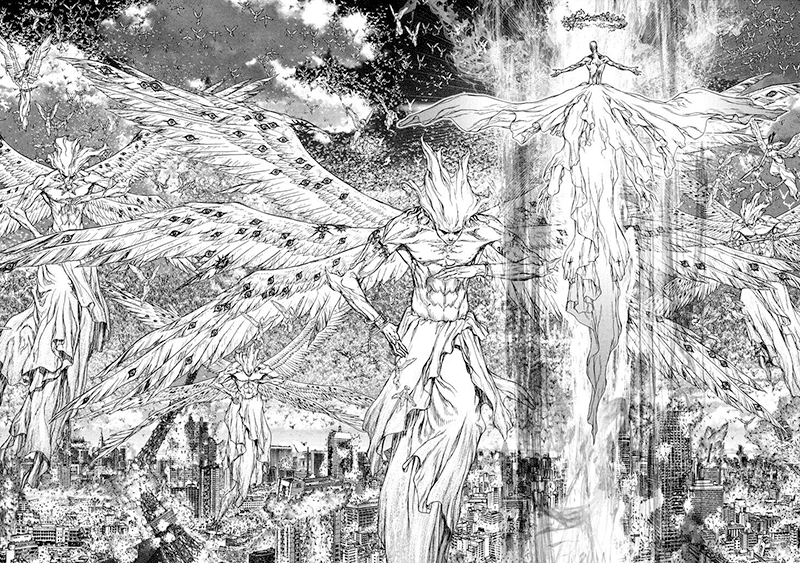
The last chapter, chapter five, stands out amongst the rest because it’s drawn in stunning full color and is breathtakingly beautiful. Yet, there’s not much of a story to be found here.
My favorite was the very first chapter, featuring the titular Hotel. It was a tale as futuristic as it was emotional.
While Hotel’s a collection, and one that can get rather weird, I still think it deserves its spot on this list. Boichi’s at the top of his game, and all the stories featured are interesting in their own right.
If you’re looking for a quick, creative read that comes with some of the best art in the medium, read Hotel.
Battle Angel Alita

With cyberpunk and science-fiction, there’s no way around Battle Angel Alita. It’s a fantastic manga.
One day, the scientist Ido discovers the remains of a cyborg girl. Ido takes it upon himself to restore her, names her Alita and gives her a new body.
From this point onward, we follow Alita as she finds her way in this new world. Over the course of the story, she battles various adversaries and develops from an innocent, childlike character into a battle-hardened badass.
The manga’s mostly set in the gritty, post-apocalyptic town of Scrapyard. Each part of the town’s fully realized, detailed and a delight to look at. It’s a mad cluster comprising machines, factories, and rubble.
Battle Angel Alita’s art is mostly serviceable, but shines during battle scenes. They are intense, fluid, but never confusing. This is especially noticeable during the fantastic motor ball arc.

What makes the manga so great is Alita herself. While the manga has an overarching plot, it mostly focuses on Alita and how she finds her place in the world. Many deeper themes, such as the meaning of life or finding out who you are, are discussed as well.
While the manga’s setting is well drawn, the character’s design is often unrefined. Many of the robots and cyborgs we encounter can look cartoonish.
Another problem’s the characterization. Alita can be immature and arrogant, while other characters can be one-note or overdrawn.
And yet, Battle Angel Alita’s an entertaining cyberpunk, science-fiction manga full of well-paced battle scenes. If you’re a fan of science-fiction or cyberpunk, I urge you to read this fantastic manga.
Made in Abyss
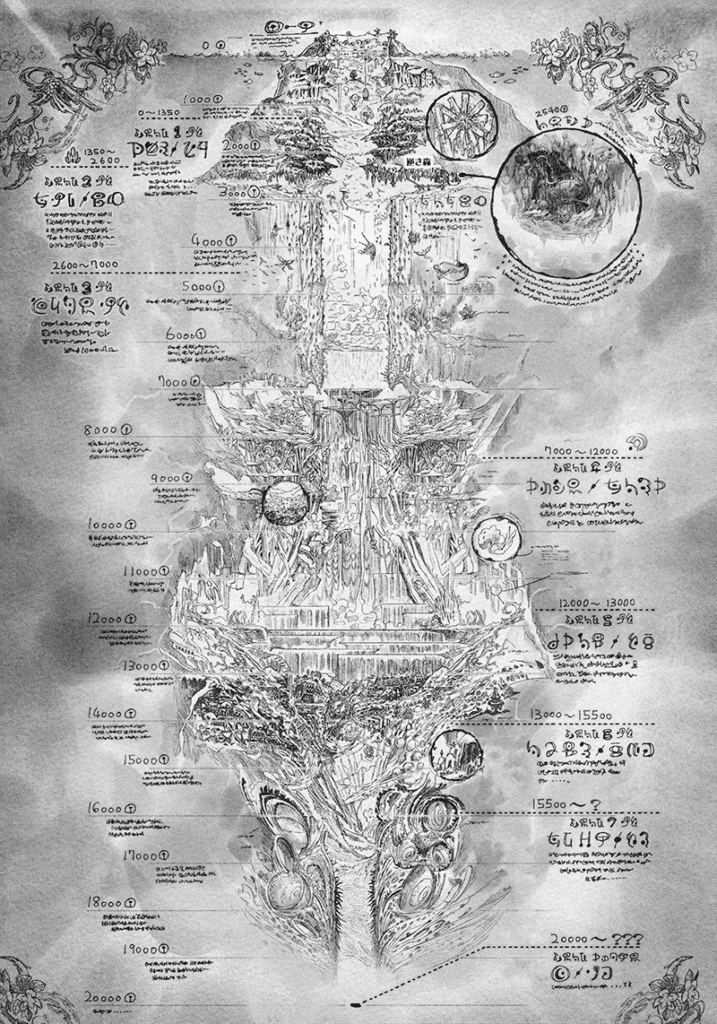
Some manga stand out because of characters or story, some because of the world they create. Made in Abyss is one of the latter.
The Abyss is one of the most captivating settings in manga.
It tells the story of Riko, a young girl living in the town of Orth. It’s built around the edges of a giant chasm that was never fully explored, the abyss.
Riko’s the daughter of one of the most famous cave raiders, a White Whistle, who appeared years ago. It’s her biggest dream to follow in her mother’s footsteps and become a White Whistle herself.
One day, she meets a robot boy called Rengu. Together, the two of them decide to descend the abyss in search of her mother.

Made in Abyss is a mixture of fantasy and science-fiction which stands out for its amazing art. It’s breathtakingly beautiful and many of the abyss’ locations are incredibly detailed.
The most interesting part about this manga, however, is the abyss itself. It’s a strange world populated by alien creatures and strange characters alike.
Interestingly enough, the manga starts out rather lighthearted. The deeper our characters descend, however, and the more outlandish their surroundings become, the darker and more disturbing the story becomes.
The one problem I have with this manga is the age of the characters. One has to wonder why children were chosen. Was it as a contrast to the alien world and the disturbing plot, or was it to make the horrible events even more horrible because they happen to children?
Even though, I enjoyed Made in Abyss immensely. It’s a fantastic manga that comes with some of the medium’s best art and one of the most unique settings ever created.
Jagaaaaaan
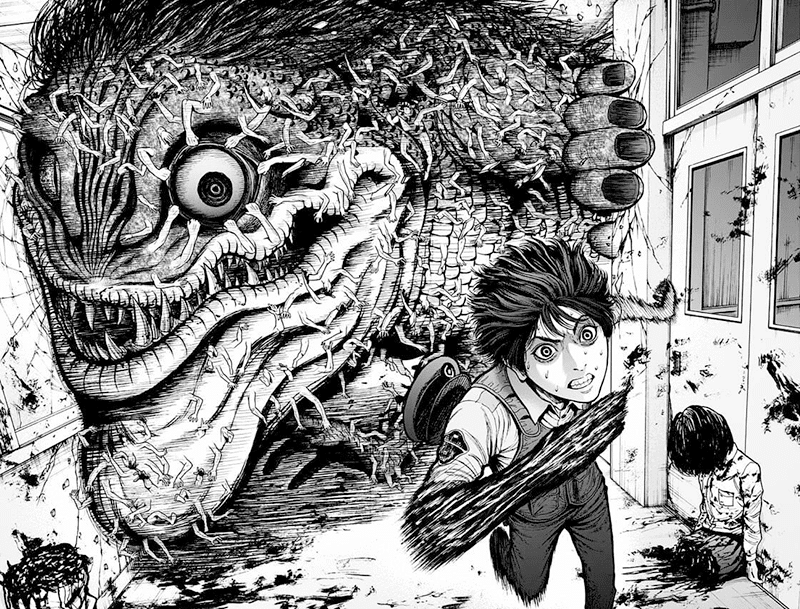
Jagaaaaaan by Muneyuki Kaneshiro and Kensuke Nishida is a fantastic manga, but also quite a weird one.
It introduces us to Shintarou Jagasaki. He’s a young police officer who isn’t too fond of his life. All that changes during a train ride when escorting home a drunk man.
An angry office worker transforms into a monster and tears apart the other passengers. Jagasaki defeats the monster by shooting a beam from his hand. The man was a fractured human and Jagasaki has become one, too.
Fractured humans came into being when so-called frenzied frogs rained down on Tokyo. These frogs infest humans with powerful desires and eventually transform into monsters.
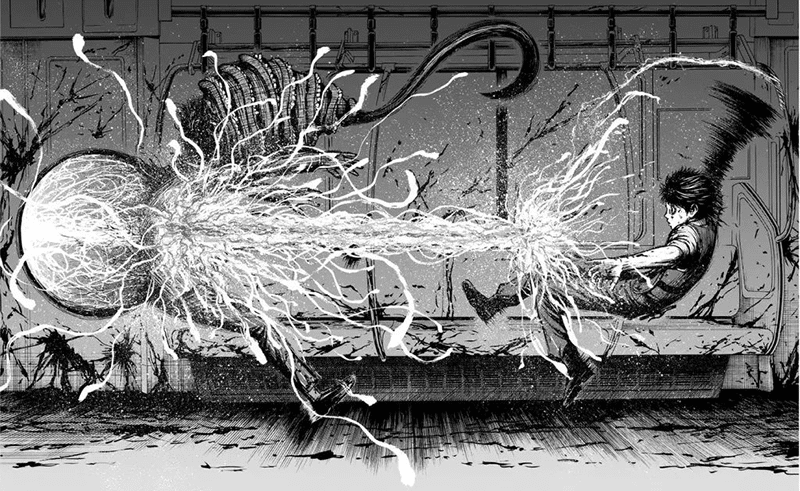
Jagaaaaaan’s story starts out crazy and only gets crazier as it continues.
The art in Jagaaaaaan’s fantastic. It’s noticeable, especially in the monster design. All the fractured humans look incredible. The same is true for the manga’s many battles. They are a marvel to look at, are fast paced, and often quite brutal.
Anyone who’s read the works of Muneyuki Kaneshiro knows he’s got a hang for weird characters. While Jagasaki himself is a weirdo, many other characters in this manga are nothing short of deranged or psychotic.
Yet Jagaaaaaan has some problems. The pacing in the earlier chapters is a bit off and gives them a rushed feeling. Another is the depiction of explicit content, especially in terms of sexual abuse.
Still, Jagaaaaaan’s a fantastic manga full of weird, twisted and strange characters. If you enjoy the first few chapters, I’m sure you’ll love the rest.
Solo Leveling
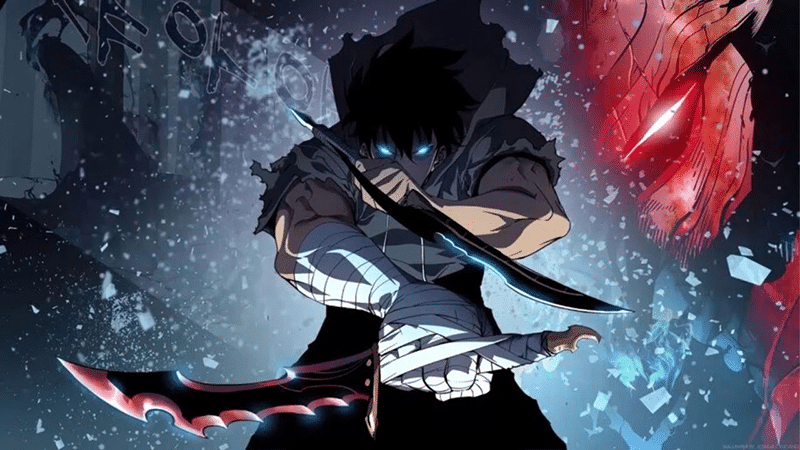
Solo Leveling is a manhwa adaption of the web novel by the same title.
At first, Solo Leveling might not appear as much. The story and world-building are both rather simple. One day, so-called gates appear around the world, connecting it to a world of monsters. At the same time, many humans are bestowed with superhuman powers. These hunters are now tasked with fighting the various monsters pouring from these gates.
Jin-Woo Sung is one such hunter, but he’s pathetically weak compared to others.
After a disastrous mission, he awakes at a hospital and finds a quest log in front of him. He can now level up, do quests and become stronger, a feat exclusive to him.
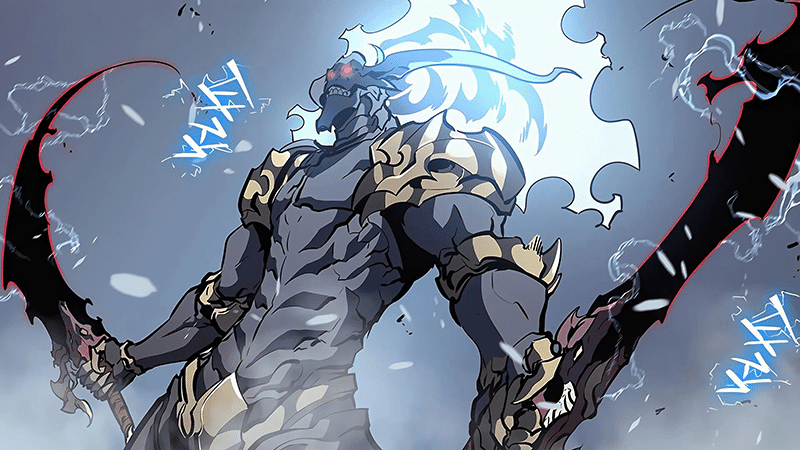
Solo Leveling is basically a power fantasy.
Where Solo Leveling stands apart from other series is in terms of arts and fights. Solo Leveling is a beautiful series that comes in full color. While the story isn’t too deep, it serves as a vessel for the one thing the series is about: fights. They are fast-paced, fluid and incredibly well drawn.
The only problem I have with Solo Leveling is that Jin-Woo Sung became too strong, too quickly. It was very interesting to watch him grow and struggle, but before long, he could defeat most enemies with relative ease.
This, however, is the only problem I had with the series. Overall, Solo Leveling is a lot of fun, the art is fantastic, and the action is incredible. While the plot’s relatively basic, I still regard it as one of the best power fantasy series out there.
Fuan no Tane

Fuan no Tane by Nakayama Masaaki is a horror anthology comprising very short horror stories, no longer than a few pages.
The most interesting part of Fuan no Tane is the absence of an overall plot. It focuses entirely on presenting creepy and strange incidents related to ghosts and other supernatural entities.
Each chapter comprises incidents related to a specific theme. Some are set at specific locations, such as schools or hospitals, while others deal with certain concepts such as uninvited guests.
While the absence of a plot might feel strange at first, it’s also what makes Fuan no Tane such a fantastic manga.
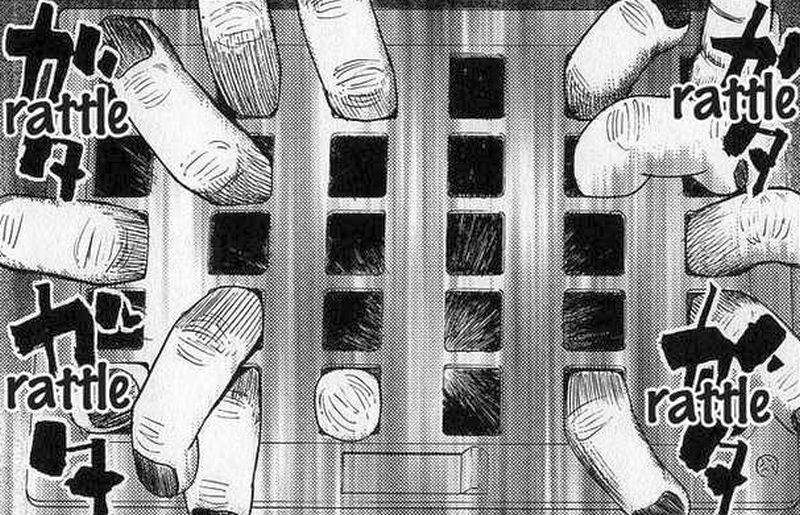
Instead of focusing on character introduction, setting or plot, the focus is entirely on the creepy incidents. This way, the horror, the scariness, never takes a step back throughout the entire manga.
Fuan no Tane’s art style is unique, and sketchier than that of other manga. Yet, this helps immensely to bring forth the overall creepy and uneasy atmosphere.
While I absolutely love Fuan no Tane, and think it’s a fantastic manga, it’s not for everyone. The absence of a general plot or developed characters might alienate and even frustrate some readers.
Yet, if you’re interested in nothing but brief glimpses at scary incidents and creepy scenes, Fuan no Tane is exactly what you’re looking for. As a horror fan, you won’t be disappointed.
Knights of Sidonia
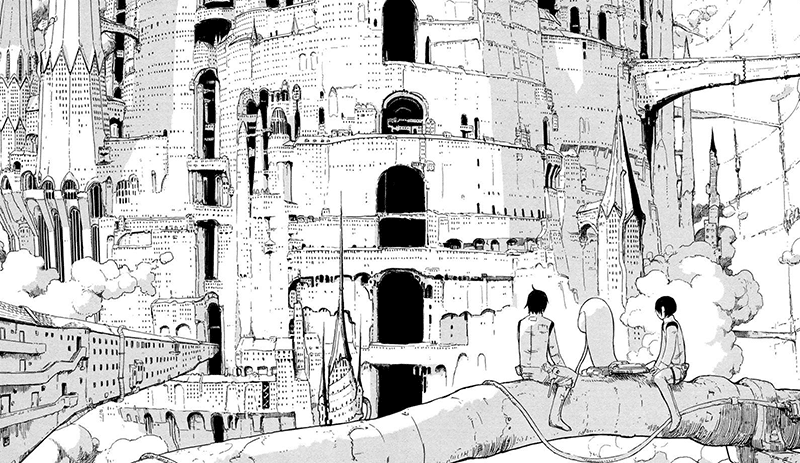
Knights of Sidonia’s a mecha-space manga by Tsutomu Nihei, my favorite mangaka of all time.
It tells the story of the Sidonia, a spaceship, and a young man named Nagate Tanikaze.
After the Earth was destroyed by powerful aliens known as Gauna, the Sidonia fled into space. Yet, to this day, it’s relentlessly attacked by the Gauna.
Nagate Tanikaze spent most of his life in the ship’s depth with no contact with other human beings. Eventually, he finds his way to the populated areas. Since he’s born with an inherent talent for piloting, he soon comes to pilot one of the Gardes, giant mechas designed to fight the Gauna.
The first thing noticeable about Knights of Sidonia is that it’s much more mainstream-friendly than Nihei’s earlier series.
Biomega and especially Blame! were dark, gloomy and gritty and told most of their story via visuals.
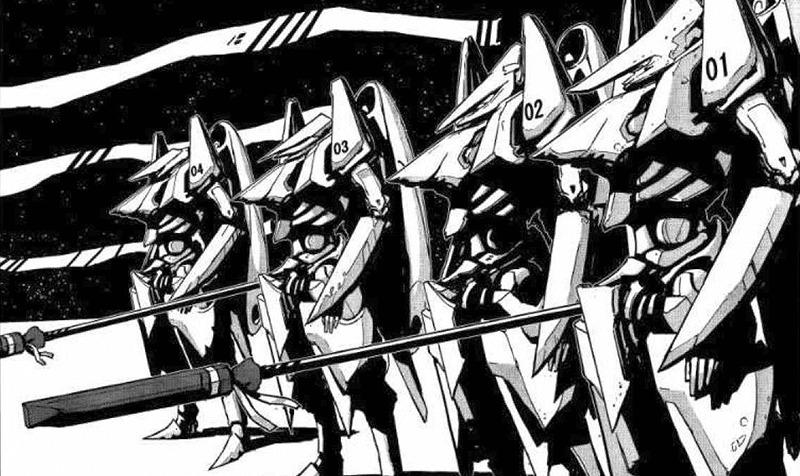
In Knights of Sidonia, however, we got an almost conventional cast of characters. They hang out together, joke around, fall in love and much more.
However, the gritty, dark atmosphere is still present, especially in fights against the Gauna. Other typical elements, such as grand architecture, mega structures, Toha Heavy Industries, and biomechanical horrors, are all there. We even encounter entities reminiscent of Blame!’s cybernetic horrors.
While the series feels more lighthearted when compared to Nihei’s earlier works, it’s still a seinen series. Death and destruction are an everyday occurrence.
The biggest problem, apart from the more mainstream-friendly elements of the manga, is the ending. It felt a bit too happy, and even somewhat cheesy.
Still, Knights of Sidonia’s an absolutely fantastic manga, and one of the best space operas I’ve ever read. If you’re a fan of space manga, definitely check it out.
Akira
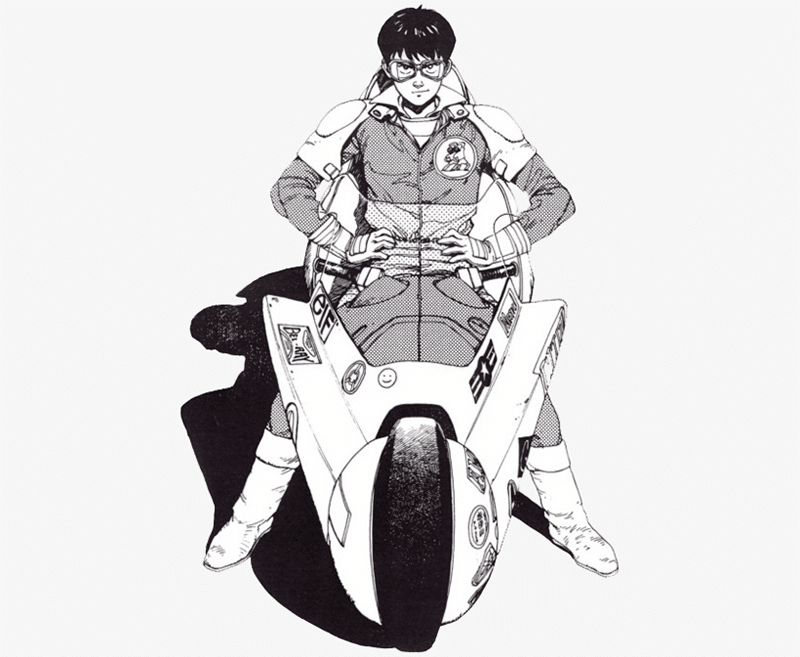
Katsuhiro Otomo’s Akira’s not only a fantastic manga but also one of the most influential manga of all time. It spawned not only the Japanese cyberpunk subgenre but also one of the most influential anime of all time.
The manga’s set in Neo Tokyo which was erected after Tokyo was destroyed by a mysterious explosion in 1988. Neo Tokyo’s a dystopian hell that fuses future technology and giant skyscrapers with biker gangs and poverty.
Soutarou Kaneda and Tetsuo Shima are two bikers who are not only best friends but also bitter rivals. After Tetsuo pulls a desperate stunt to prove he’s equal to Kaneda, he sets in motion the awakening of Akira, a secret government project.
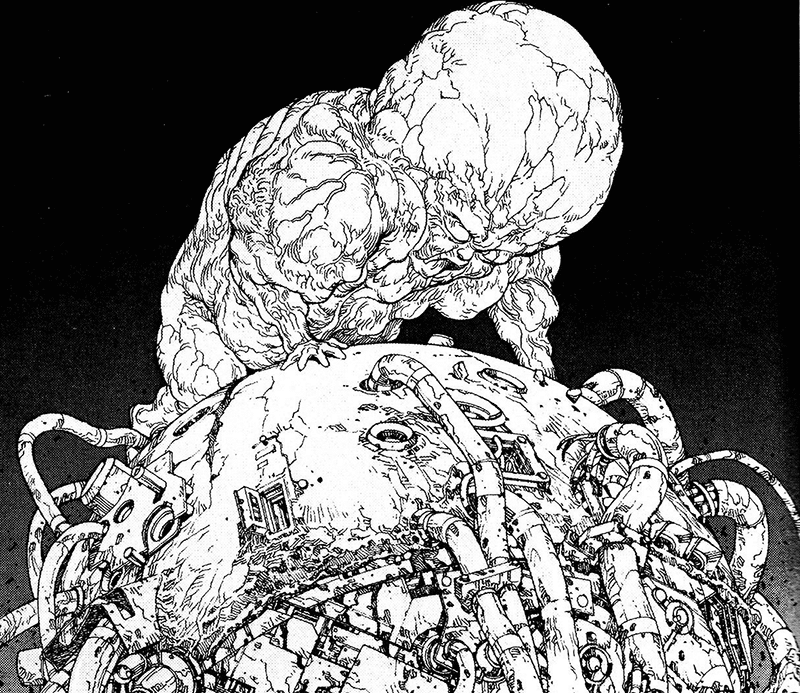
What makes Akira such a fantastic manga is Katsuhiro Otomo’s art. The character design is impressive, but it truly shines in the depiction of Neo Tokyo. Every part of the city’s gorgeously rendered, be it futuristic technology or dirty corners and rubble. Even the massive destruction taking place in later parts of the manga’s rendered in glorious detail.
Character and story, on the other hand, are rather mediocre. Kaneda and Tetsuo are more arch-types than fleshed out characters. Kaneda’s a badass biker boy, while Tetsuo’s an edgy youth with anger problems.
The story seems more vessel for style than anything. What starts out with a focus on biker gangs, drug orgies and government conspiracies, soon devolved into clashes between psychic super humans.
And yet, Akira’s still a fantastic manga. It’s a dystopian cyberpunk story, full of psychic powers, future tech and crazy megalomaniacs. Most important of all, however, it’s one of the most beautiful and important works in the entire medium.
Dorohedoro
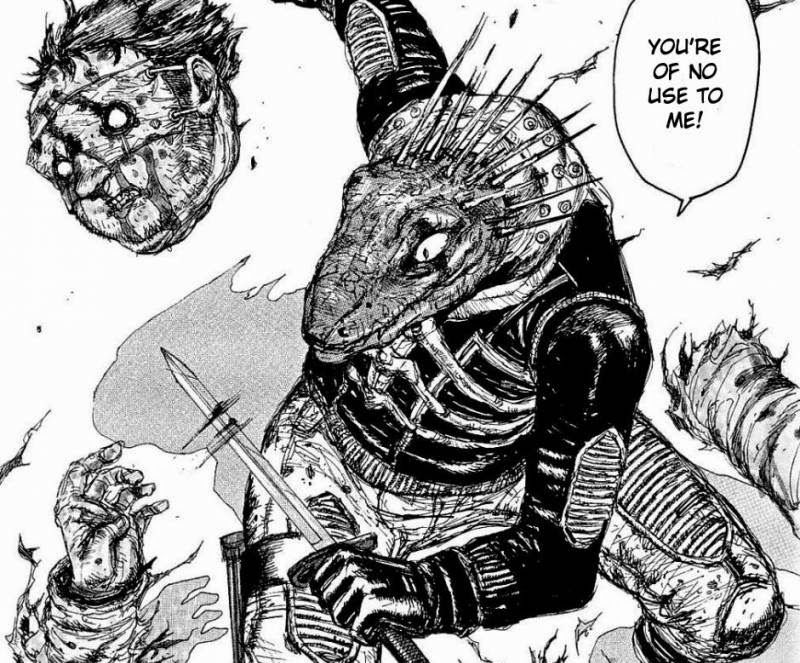
Anyone who’s read Q Hayashide’s works knows they are weird. Dorohedoro’s no exception. It’s a fantastic manga, but also one of the weirdest I’ve ever read.
The story’s set in a grim, dark world, full of gore and violence, but it’s presented to us in an often strangely humorous way. This air of lightheartedness, in contrast to all the carnage we witness, makes reading Dorohedoro an entirely surreal experience.
Dorohedoro tells the story of Kaiman. He’s an amnesiac with the head of a reptilian. His home is the city of Hole, which is connected to the Sorcerer’s World, a place populated by magic users. These magic users often visit Hole to test out their powers and as a result, Hole’s inhabitants are transformed, mutilated and even murdered.
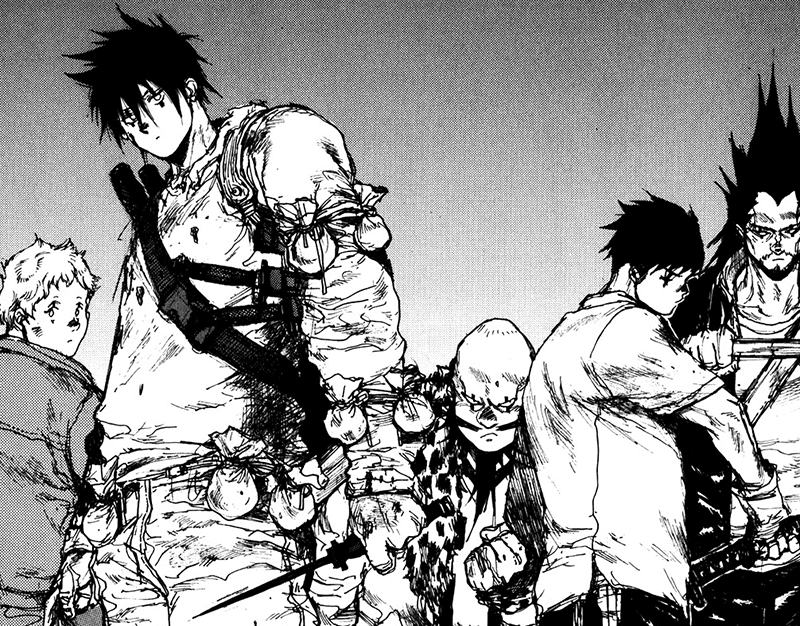
Kaiman hunts down these magic users because he thinks one of them is responsible for his strange condition.
While this premise sounds weird enough, the story proves to get only weirder. Describing Dorohedoro’s plot is almost impossible because of how creative and original it is. The best way to describe it is as a work of surreal madness.
The characters, too, are weird across the board. Be it the transformed inhabitants of Hole, or the outlandish magic users populating the Sorcerer’s World.
Dorohedoro’s a beautiful manga. The Sorcerer’s World, the run-down city of Hole and all the carnage and graphical violence we witness are rendered in stunning detail.
If you’re looking for a surreal and fantastic manga, read Dorohedoro.
Shigurui

Noria Nanjou and Takayuki Yamaguchi’s Shigurui’s not only a fantastic manga but also one of the best samurai manga of all time.
One day, the daimyo Tadanaga Tokugawa proclaims to hold a martial arts competition with real swords featuring fights to the death.
The first fight pits the one-armed Gennosuke Fujiki against the blind and lame Seigen Irako. Instead of showing us the result of the fight just yet, the manga reveals each characters’ backstory.
Two things make Shigurui stand out. One’s the art which is amongst the most beautiful seen in any manga. Characters, backgrounds and even nature are nothing short of stunning, and all the brutality and gore are rendered in beautiful detail.
The other is the depiction of samurai culture. Many other manga romanticize it and depict it as honorable. Shigurui, however, shows us how brutal, unforgiving and despicable samurai culture really was.
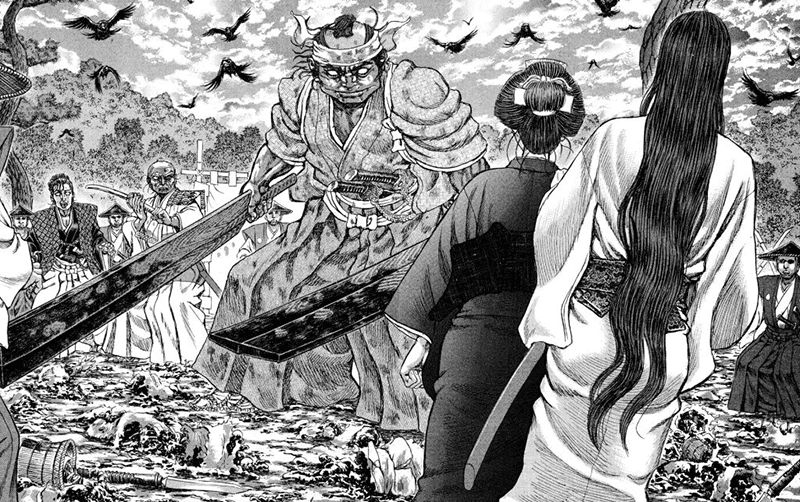
Because of this, the manga’s filled with an atmosphere of depression. It’s almost stating that nothing good’s to be found here. It shows us the life by the sword for what it really is: one of servitude and obedience shrouded in the guise of honor.
Yet, Shigurui has its faults. The manga’s largely character driven, and in later parts, this causes the story to drag on a bit, making it almost tedious.
Another’s the inclusion of an arc unrelated to our protagonists. The original novel, however, depicts the backstory of all the competition’s participants, which might have been the manga’s original plan, but was eventually dropped.
While the ending’s rather satisfactory in conveying the manga’s overall themes, it still feels rushed.
Still, Shigurui’s one of the best samurai manga of all time. It’s, however, not for the faint of heart and tells a story that’s as depressing as it is tragic.
Lone Wolf and Cub
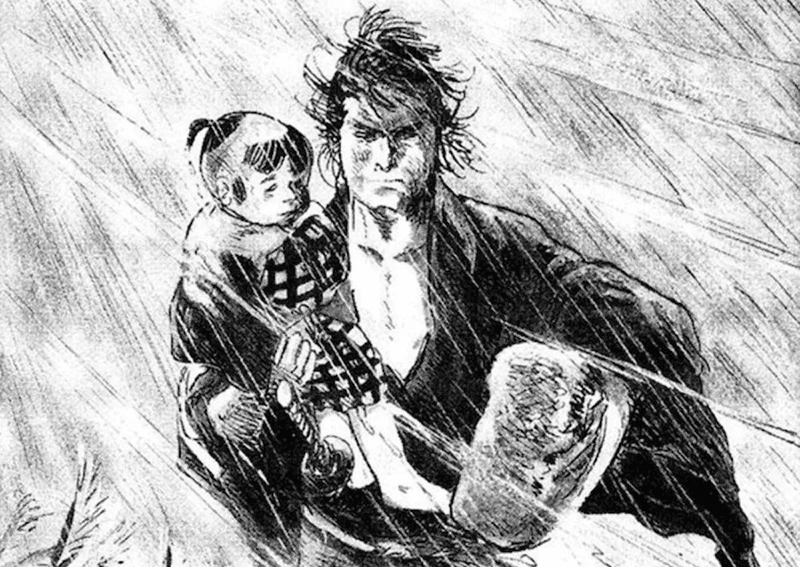
Kazuo Koike and Goseki Kojima’s Lone Wolf and Cub, is amongst the most influential samurai manga ever created.
It tells the story of Ittou Ogami. He was the Shogunate’s chief executioner until he was framed for treason by the Yagyuu Clan. He was forced to flee with his young son, and now travels the land as an assassin for hire.
At first, the manga’s told in episodic fashion, detailing the various assassinations Itto Ogami carries out. As we learn more about our protagonist, however, we also learn that his travels serve one purpose alone: to get revenge against the Yagyuu Clan.
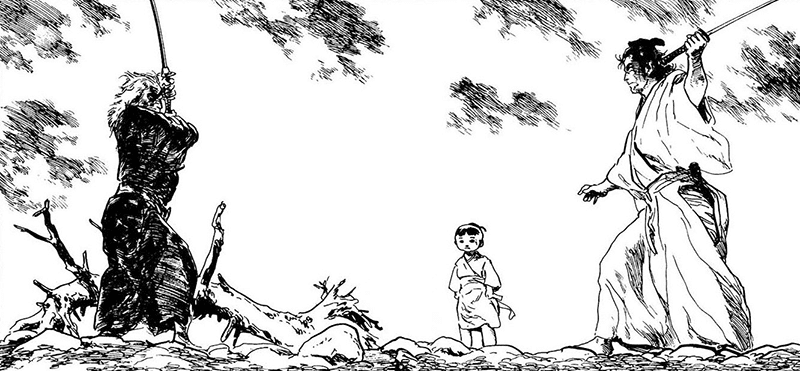
Yet, it’s not this overall plant that makes Lone Wolf and Cub such a fantastic manga. It’s the individual, episodic stories. They often convey more depth and emotional weight than other, much longer works.
While the art is old-fashioned, it’s fantastic. It’s simple and gritty, yet realistic, giving Lone Wolf and Cub an entirely unique style fitting for a traditional samurai story.
Where this art shines the most, however, is in the action sequences. They are incredibly well done, hold up even today, and are easily amongst the best sword fights in the entire medium.
Another great thing about this manga is Ittou Ogami himself. On one hand, he’s portrayed as a brutal assassin, on the other he’s a deeply caring father. This dualism, and the many other nuances we learn about him, make him one of manga’s most complex characters.
Lone Wolf and Cub might not be for everyone. It’s old-fashioned, realistic and less flashy than other samurai manga. Yet, it’s also one of the genre’s greatest accomplishment. If you’re a fan of more traditional stories, read it.
Gokushufudou: The Way of the House Husband

Comedy manga are often hit or miss, but Gokushufudou by Kousuke Oono is pure gold.
The story concerns Tatsu, who was once a legendary yakuza, but retired and became a househusband.
While mundane household tasks have their own challenges, this is not where Gokushufudou’s humor comes from. It’s the manga’s presentation. All these normal, mundane tasks are presented with the intensity of a crime or battle manga.
Going shopping on bargain day is presented with the same tension and suspense as a life and death situation. A meet-up with an old rival is shown as a dramatic clash that might lead to violence. A second later, however, Tatsu and his rival engage in a cooking challenge to see whose food is more popular.
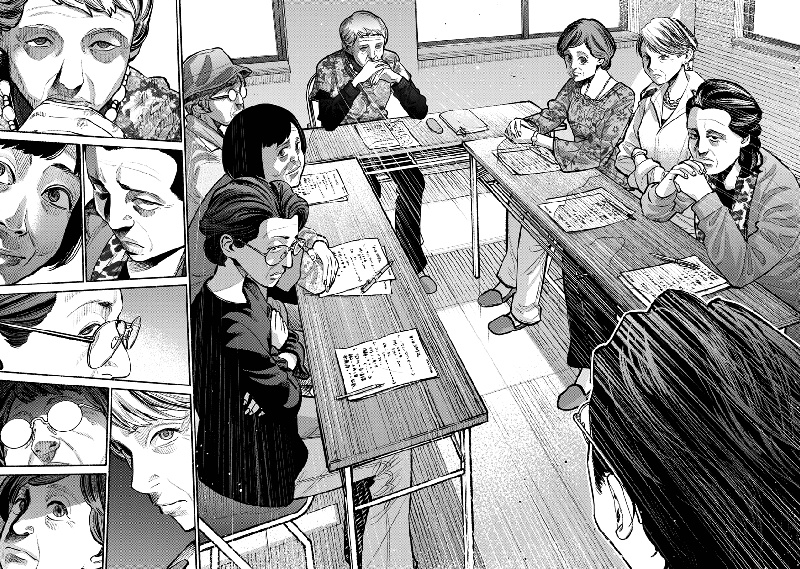
It’s this art style, this presentation that makes Gokushufudou such a fantastic manga. The showcasing of a normal, mundane life in such suspenseful, and over-the-top way is nothing short of genius.
Characters, too, are presented in the same ridiculous and over-the-top way. Be it simple shopkeepers or the friendly women of the neighborhood association, they are all presented to us as cut-throat gangsters or even yakuza bosses.
Gokushufudou is, without a doubt, one of the funniest, most ridiculous manga I’ve ever read and comes with a beautiful, well drawn and over-the-top art style.
If you’re looking for a manga full of ridiculous situations and that will make you laugh out loud, read Gokushufudou. It’s one of the best comedy manga of all time.





